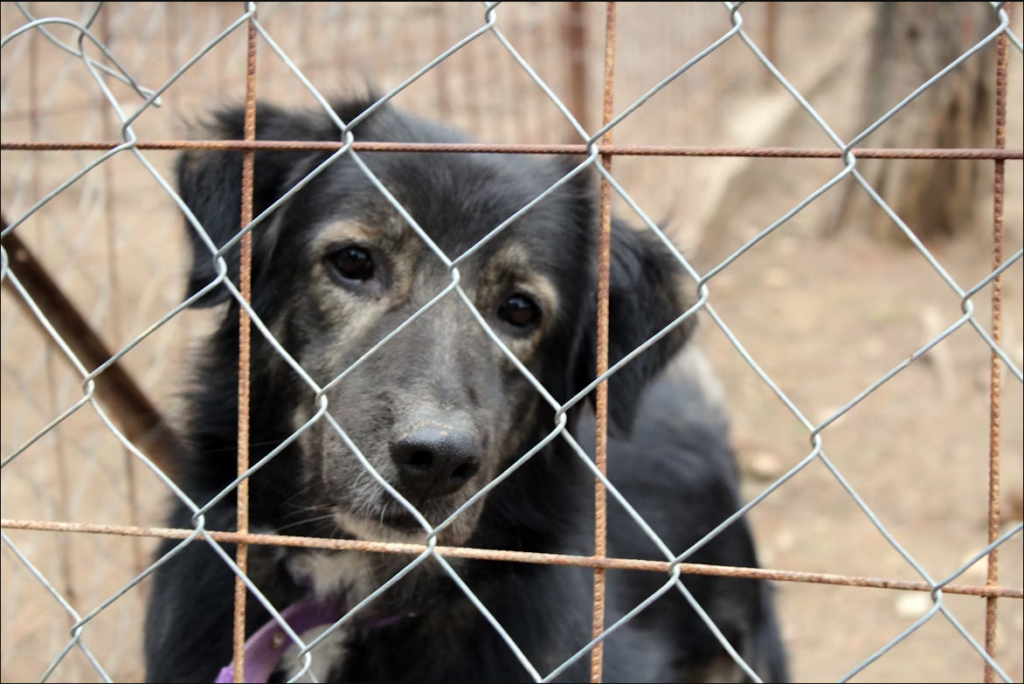
Bringing a shelter dog into your home is a rewarding experience, but it also requires patience, preparation, and understanding. Data collected from over 7,000 shelters found that there’s been a 6% increase in stray dogs entering shelters. One reason for this is that the cost of dog ownership has gotten expensive in recent years. Did you know that annual costs for visits to the vet and food alone add up to almost $700?
As a result, families who can no longer afford these costs often abandon their pets in shelters, where they await adoption along with strays. Many rescue dogs have faced uncertainty, and transitioning to a new environment can be overwhelming for them.
Trying to get them adjusted into your home can be an overwhelming experience. In this article, we’ll walk you through how to ensure a smooth adjustment period and help you build a strong bond with your new pet.
#1. Preparing Your Home for Your New Dog
Getting a new pet is definitely an exciting experience, but proper preparation is vital. Before you bring in your dog, you want to designate a safe space where they can retreat and feel secure. This can be a crate, a dog bed in a quiet corner, or just a separate room. The point is that this area will serve as their personal space while they adjust to the new environment.
Next, gather essential supplies to meet their basic needs. Food and water bowls, a leash, a comfortable bed, and a few toys will help them settle in more easily. Remember, having everything ready beforehand will minimize stress and allow you to focus on making your new dog feel welcome.
When your dog arrives, keep introductions calm and stress-free. Give them time to explore at their own pace without overwhelming them with too much attention. You’ll want to avoid forcing interactions, and instead, let them come to you when they feel comfortable.
You also don’t want to leave them alone with any choking hazards. According to the Central New York SPCA, there are over 200,000 pet choking incidents every year in the U.S. These incidents are often triggered by small toys and treats.
Once your dog feels comfortable, the patience-testing process of potty training will soon begin.
#2. Toilet Training and Establishing Routines
Toilet training is one of the most important aspects of integrating a shelter dog into your home. While some dogs may have prior training, many will need guidance to establish a new routine. Observing signs that your dog needs to go outside such as pacing, sniffing, or whining will go a long way in preventing accidents.
In the initial few months, there may be no other option than to let your dog relieve itself in the yard. In the early stages, you want to get your dog used to its new life, so hold off on immediate training. Yes, someone will have to clean up the mess, but you can Google “dog poop pick up service near me” and find help for that.
As Scoop Soldiers notes, this will also be important to keep nasty germs from your yard, at least until the potty training period is over. The Wounded Paw Project explains that rescue dogs often come from unpredictable backgrounds. Thus, they stress the importance of being consistent with potty training and using the same words and gestures when they need to do their business.
Essentially, you want to create a consistent bathroom schedule where you take your dog out at the same time each day. This will help them understand when and where they should relieve themselves.
When they go to the right spot, immediately reward them with praise or a treat to reinforce the behavior.
#3. Dealing With Behavioral Challenges
Training and behavioral guidance play a crucial role in helping a shelter dog adjust to its new home. Teaching basic commands like sit, stay, and come not only establishes good manners but also strengthens communication between you and your dog. In addition to basic training, it’s important to address common behavioral challenges.
You may also notice that many dogs in shelters tend to be mixed breeds. A study conducted on 940 dog owners found higher instances of separation-related behavior (SRB) problems in mixed-breed dogs. (50.56% of SRB dogs were mixed breeds, compared to 33.97% of non-SRB dogs.)
You’ll have to be prepared to deal with some of these behavioral issues due to their past experiences. One simple solution would be to provide appropriate chew toys to redirect destructive chewing. At the same time, try to learn techniques to help with gradual desensitization. This can greatly help ease separation anxiety.
If excessive barking becomes an issue, identifying triggers and using redirection strategies can help manage the behavior. If your dog displays persistent fear, aggression, or extreme anxiety that does not improve with basic training, a certified dog trainer or behaviorist can offer specialized guidance tailored to your pet’s needs.
Remember, progress may not always be linear—some days your dog will respond well, while other days may present setbacks. Patience and consistency are key to reinforcing positive behaviors. Celebrate small wins, and avoid frustration if things don’t go perfectly right away.
Frequently Asked Questions
1. What is the meaning of a shelter dog?
A shelter dog is a dog that has been rescued or surrendered and is housed in an animal shelter while awaiting adoption. These dogs may come from various backgrounds, including strays, owner surrenders, or abuse cases. They require patience, care, and training to adapt to a new home environment.
2. What is the best age to adopt a shelter dog?
There is no single “best” age to adopt a shelter dog, as it depends on your lifestyle and experience. Puppies require extensive training and socialization, while adult dogs often have established temperaments. Senior dogs are a great option for those seeking a calmer companion. Each age group has unique benefits.
3. How to potty train an abused rescue dog?
Potty training an abused rescue dog requires patience and consistency. Establish a predictable schedule, use positive reinforcement like treats and praise, and provide a safe space. Watch for potty cues and take the dog outside frequently. Avoid punishment for accidents, as it may trigger fear. Gentle encouragement builds trust.
All things considered, adopting a dog from a shelter is a noble act. They have often had to live in terrible circumstances, and when you adopt rather than buy from a breeder, you do a great social service. The adjustment period might indeed be trickier, but with a little effort, your shelter dog will soon be your best friend.

